F-22Raptor
ELITE MEMBER

- Joined
- Jun 19, 2014
- Messages
- 16,980
- Reaction score
- 3
- Country
- Location
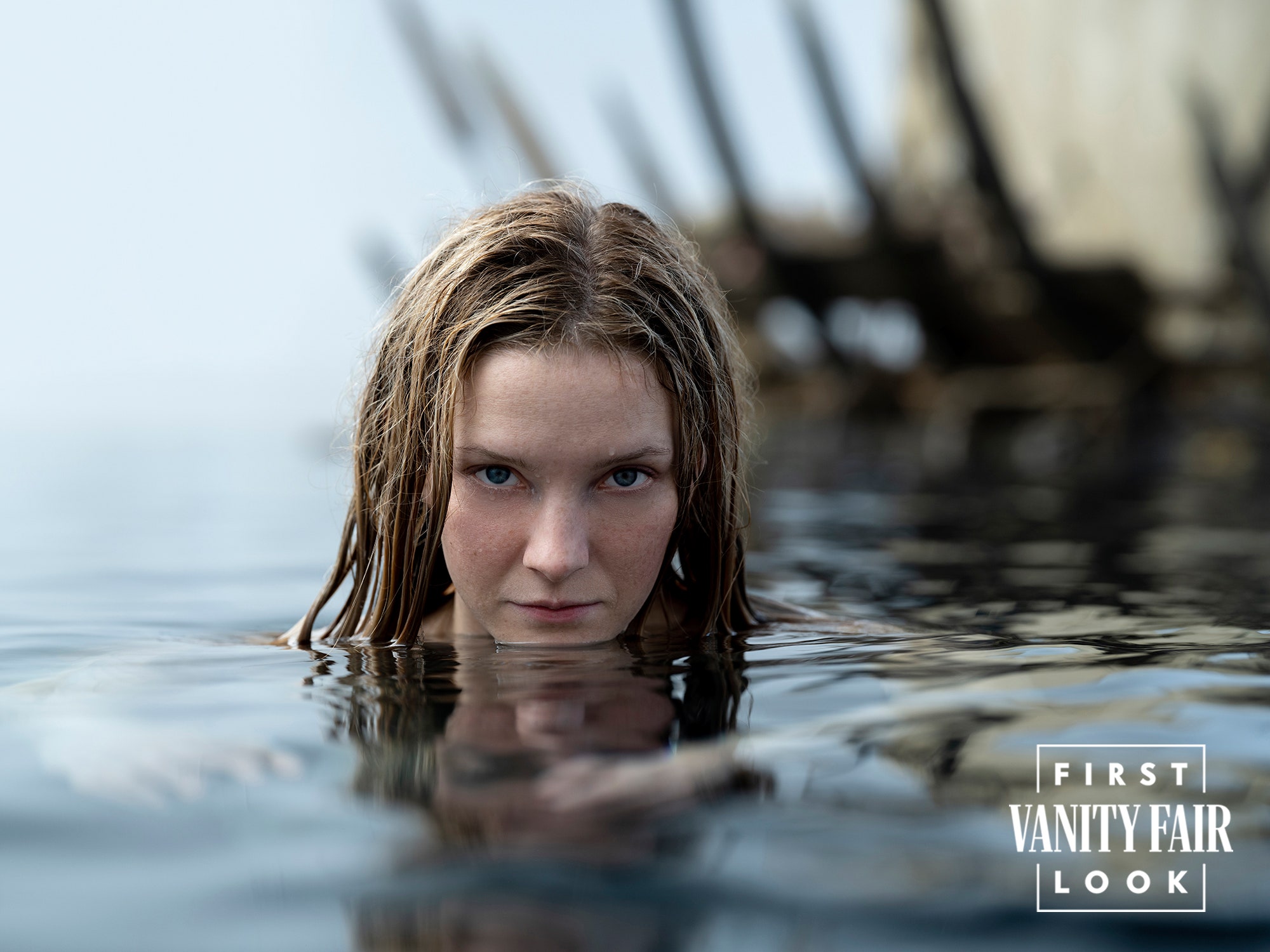
Galadriel (played by Morfydd Clark) comes up for air.
Galadriel’s world is a raging sea. Far from the wise, ethereal elven queen that Cate Blanchett brought to Peter Jackson’s acclaimed films, the Galadriel played by Morfydd Clark in Amazon’s upcoming series The Lord of the Rings: The Rings of Power is thousands of years younger, as angry and brash as she is clever, and certain that evil is looming closer than anyone realizes. By episode two, her warnings set her adrift, literally and figuratively, until she’s struggling for survival on a raft in the storm-swept Sundering Seas alongside a mortal castaway named Halbrand (Charlie Vickers), who is a new character introduced in the show. Galadriel is fighting for the future; Halbrand is running from the past. Their entwined destinies are just two of the stories woven together for a TV series that, if it works, could become a global phenomenon. If it falls short, it could become a cautionary tale for anyone who, to quote J.R.R. Tolkien, delves too greedily and too deep.
Amazon’s show, which debuts on Prime Video on September 2, is based not on a Tolkien novel per se but on the vast backstory he laid out in the appendices to the Lord of the Rings trilogy. Five seasons will likely cost the studio well over $1 billion. That kind of budget might decimate most other studios, but Tolkien, like space travel, is a personal obsession for Amazon founder Jeff Bezos, who’s among the richest people in the world. This is a big-ticket business venture that will allow him to create the most expensive, elaborate TV series ever made. While Jackson is not connected to the project, his movies, as well as their spiritual successor Game of Thrones,proved that there’s a massive audience for immersive fantasy. Of course, many have tried to capture that same audience, and few have survived or thrived.
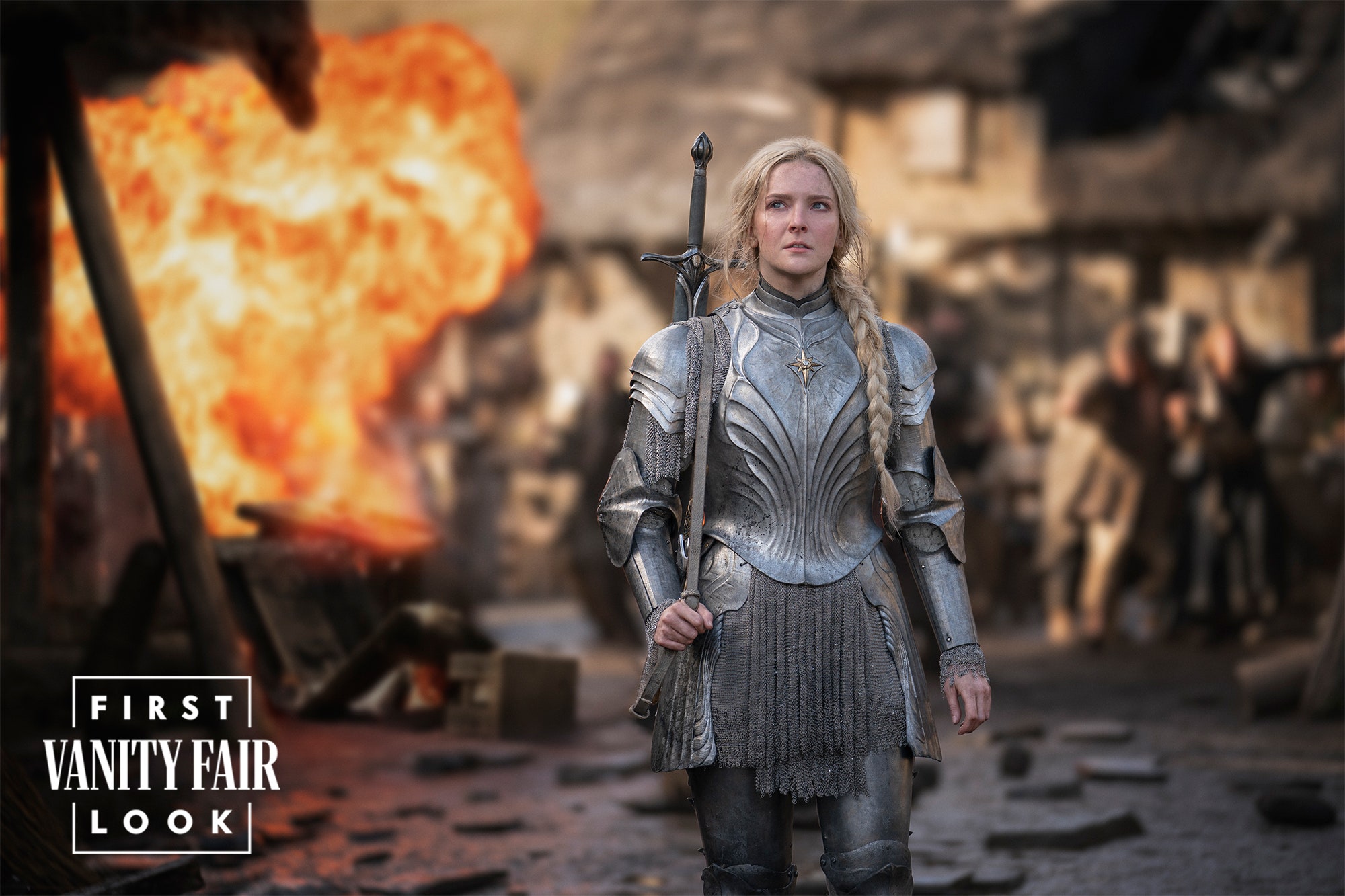
Galadriel, commander of the Northern Armies.
Because of Bezos’s immense wealth, The Rings of Poweris actually less of a financial risk than it is a reputational one. Amazon needs to definitively make the case that it can produce giant prestige shows, and with this series, it’s courting the additional danger of amending and elaborating on the canon of a beloved storyteller. The showrunners, Patrick McKay and JD Payne, are agonizingly aware of the pressure. Their series will juggle 22 stars and multiple story lines, from deep within the dwarf mines of the Misty Mountains to the high politics of the elven kingdom of Lindon and the humans’ powerful, Atlantis-like island, Númenor. All this will center, eventually, around the incident that gives the trilogy its name. “The forging of the rings,” says McKay. “Rings for the elves, rings for dwarves, rings for men, and then the one ring Sauron used to deceive them all. It’s the story of the creation of all those powers, where they came from, and what they did to each of those races.” The driving question behind the production, he adds, was this: “Can we come up with the novel Tolkien never wrote and do it as the mega-event series that could only happen now?”
Galadriel’s survival at sea is not just a crucial story point at the start of the series—the showrunners remember it as a pivotal moment on set in New Zealand back in March 2020. “Morfydd was a few days into being Galadriel, which is probably terrifying,” says McKay. “She’s in water. There’s a lot of visual effects. There’s music and light.” But despite the momentous scene in front of them, the show’s crew were glued to their phones: Within 45 minutes, word spread that in nearby Australia Tom Hanks had contracted COVID, the NBA had canceled its season, and the World Health Organization declared a global pandemic. “We’re all just going, ‘Oh, my God, what are we going to do? We’re going to have to shut everything down,’ ” says Payne. The panic metastasized, setting off other anxieties, big and small. “It was terrifying. ‘Oh, my God, is anyone going to understand what we’re trying to do here? Is this way too ambitious? We have no idea what’s going to happen tomorrow.’ ”
But one by one, the crew put down their phones. “Everyone was crowding around the monitor as we’re doing this close-up where Galadriel’s face fills the screen and she cries, and she decides: I have to fight,” says McKay. As soon as the scene ended, the soundstage erupted in cheers. “It’s a perfect example of how Tolkien and Middle-earth have a way of finding you, even in the darkest and most uncertain moments,” says Payne.
Whatever other chaos might befall them, they finally felt they were on the right path. The first three episodes, which V.F. has seen, suggest they were. The show is a lavish, compelling mix of palace intrigue, magic, warfare, and mythology—and there are enough mysteries to power a thousand podcasts. Some characters will be familiar, and they will be the initial attraction as viewers watch their legendary fates unfurl. But the entirely new faces may ultimately become even more involving, since their destinies are literally unwritten.
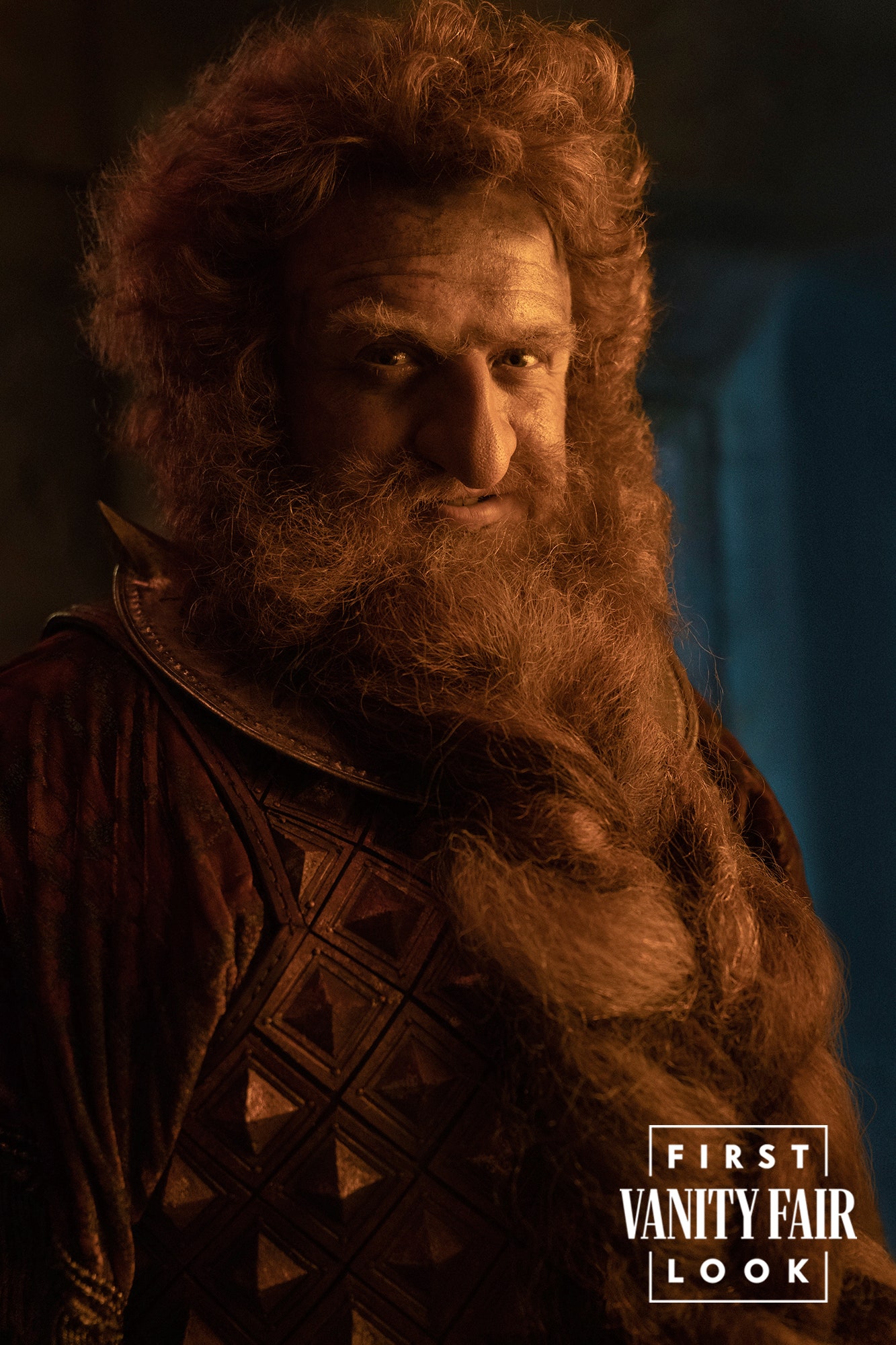
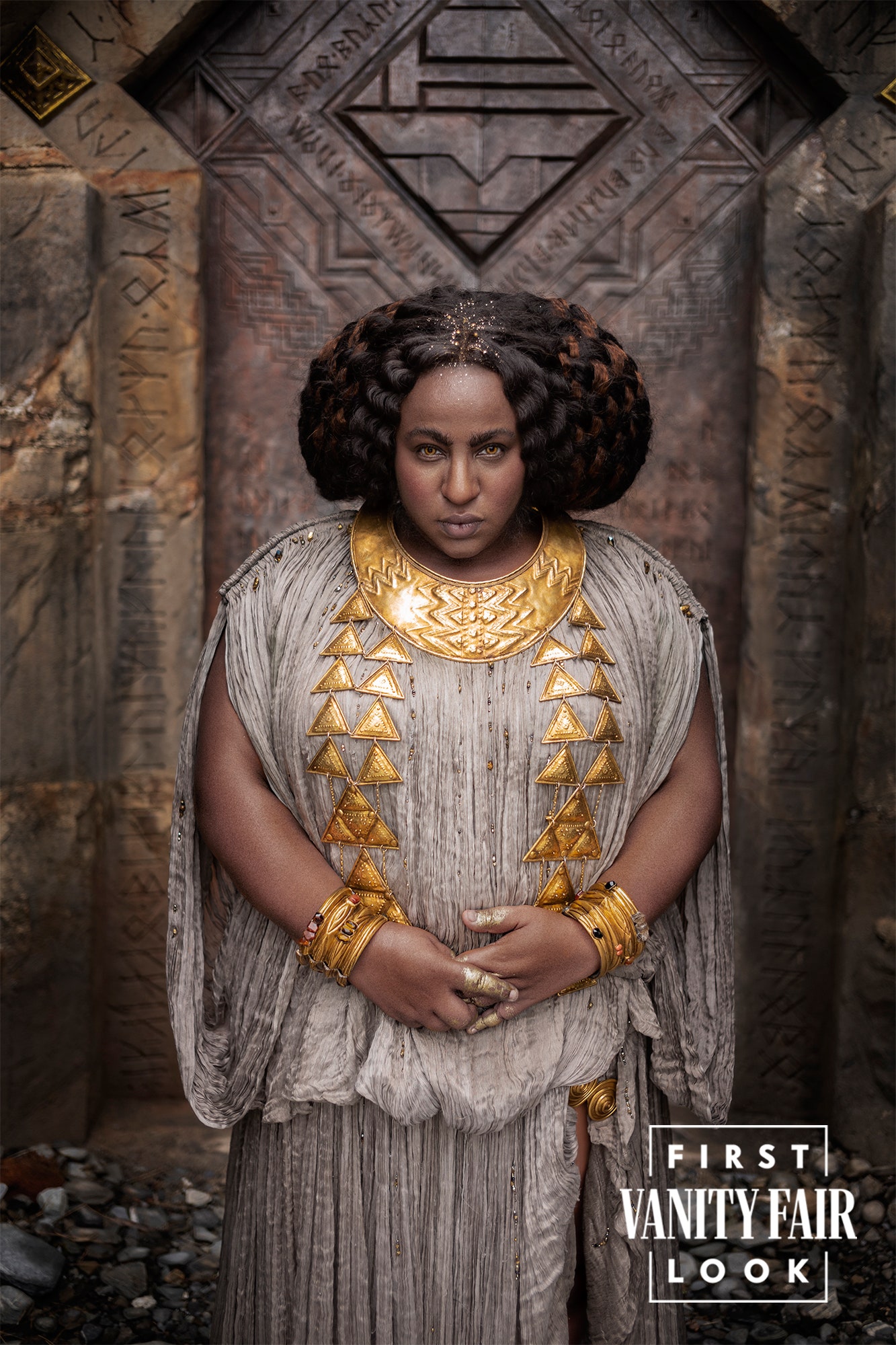
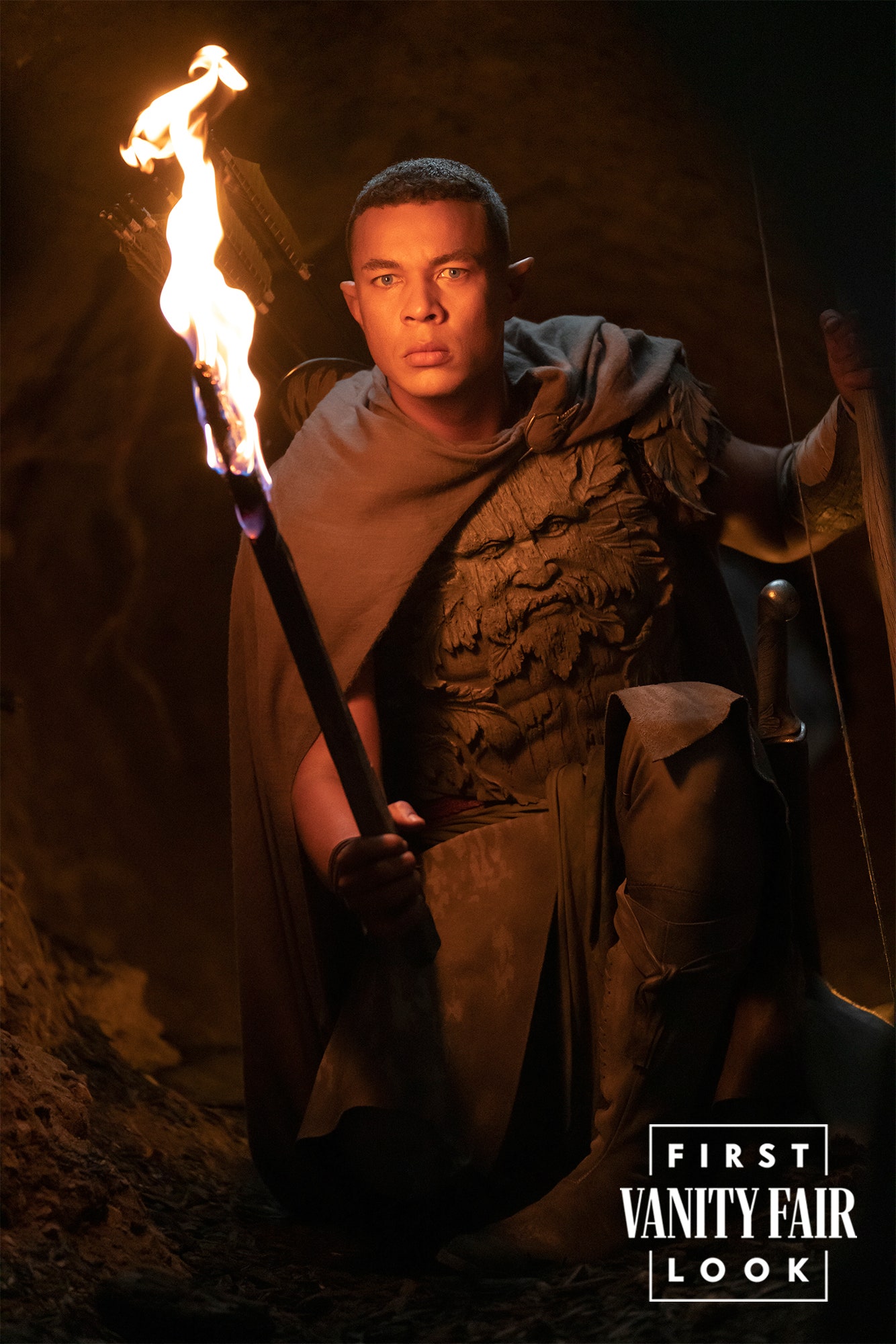
The silvan elf Arondir, played by Ismael
Previously, this part of the story was most famous as ruins. After the success of his 1937 children’s story, The Hobbit, Tolkien turned his attention back to a volume of Middle-earth history, which his publishers rejected. (A more complete version was published posthumously as The Silmarillion.) So, as the second world war of his lifetime raged around him, Tolkien crafted an adventure about beings from very different societies putting aside their differences to stamp out an overpowering evil. This, of course, was The Lord of the Rings.
In that story, an unlikely fellowship ventures into Mordor to destroy Sauron’s ring. Along the way, Tolkien wanted the characters to pass through a scarred landscape full of the remains of the many civilizations and battles that had come before. Their journey, after all, was not about confronting a new danger but finally eradicating an ancient one—a scourge of malevolence that had tormented the land for eons. Tolkien dreamed up whole kingdoms, then collapsed them for background.
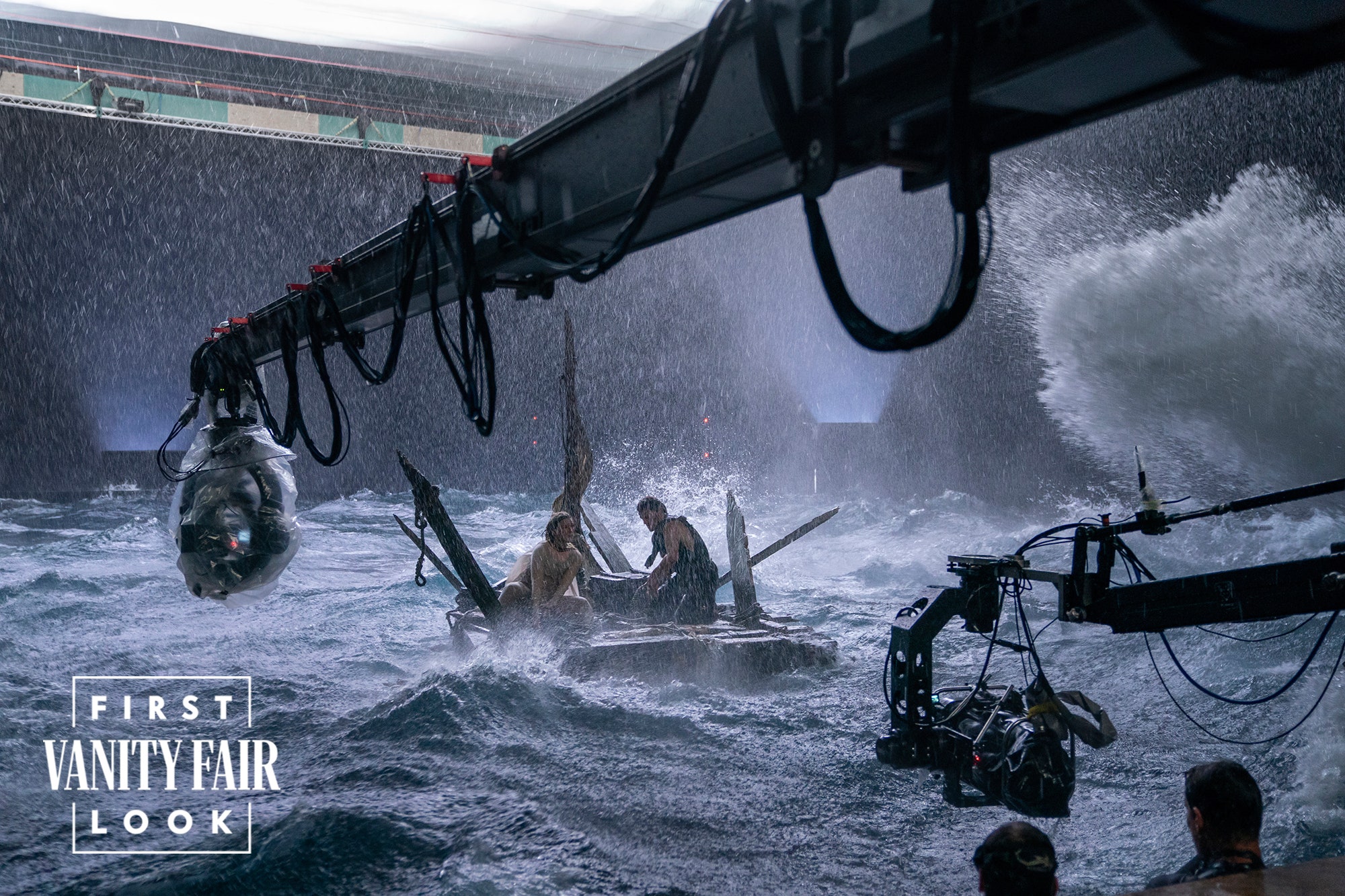
The effect worked almost too well. After the publication of The Fellowship of the Ring and The Two Towers—in July and November of 1954, respectively—readers became obsessive. “Most people want more (and better) maps,” Tolkien wrote to a friend in 1956. “Musicians want tunes and musical notations. Archeologists enquire about ceramics, metallurgy, tools and architecture…. Historians require more details about the social and political structure.” To give them everything, Tolkien informed his publisher, “would require a book at least the size of Vol. 1.”
Instead, borrowing from his rejected Silmarillion, he squeezed thousands of years of history into about 150 pages of postscript, which became known as the Appendices. These timelines, genealogies, and notes on language and culture became so important to Tolkien that he even stalled the publication of the final book, The Return of the King, to complete them. “They play a major part in producing the total effect,” Tolkien explained to a foreign publisher in 1961, “producing the compelling sense of historical reality.”
After Tolkien’s death, his son Christopher took the reins of the estate and was famously protective, if not intransigent, about adaptations of his father’s work, fearing commercialization at every turn. “Christopher really disliked Lord of the Onion Rings and the glorification of violence for its own sake,” says Tolkien scholar and Wheaton College professor Michael Drout. “He was born in 1924, and so the big special-effects movie franchise thing was just not something he cared about. If his father hadn’t sold all the Lord of the Ringsand Hobbit rights to pay the inheritance taxes, I don’t think Christopher would have sold them.”

Elrond (Robert Aramayo) is a politically ambitious young elven leader.
Over the years Christopher Tolkien left lucrative bids for other Middle-earth material on the table. But in 2017, as he was preparing to retire, the Tolkiens held a surprising auction. They were selling the rights to the Appendices that outlined what the author had referred to as the Second Age of Middle-earth, along with any references to that time period in The Lord of the Rings itself. If you’re not up-to-date on your ages, the second one is (seemingly) a time of peace for Middle-earth after an era of horror and conflict. The wicked god Morgoth has been defeated, and his apprentice, Sauron, has vanished. As the series begins, Galadriel is hunting down the last remnants of their collaborators, who claimed the life of her brother. The Third Age—and the adventures of Frodo, Sam, and the fellowship—awaits some thousands of years in the future.
The starting price for the Tolkien estate’s auction was a gobsmacking $200 million, which would have been a nonstarter if not for the industry’s obsession with finding the next Game of Thrones. And money wasn’t the only daunting factor. A handful of ageless characters, like the elves Galadriel and Elrond, could appear in the new series as their younger selves, but the studio making it would have to forgo fan-favorite hobbits and wizards, who weren’t major players in the Second Age. The Tolkien estate also wanted input into the direction of the series.
The potential upside, though, was a must-see show with a built-in audience that could virtually guarantee survival in the Great Global Streaming War. HBO and Netflix were among the bidders, but Bezos’s Amazon team won the rights for $250 million. “He is personally a huge fan of Tolkien and incredibly passionate about all of it and very well-versed,” says Jennifer Salke, the head of Amazon Studios. “His desire to be ambitious—and for us to be ambitious with our content—has always been clear from the moment I got here. This fit perfectly with that big ambition, to take on something that would require the whole company working together to execute.”
Amazon won’t confirm the show’s budget, but on top of the money for the rights, the government of New Zealand has placed production expenditures at $462 million for the first season alone. That figure includes building infrastructure that will be used in later seasons—and it’s been offset by a $108 million tax rebate. But by contrast, Amazon’s recent fantasy series The Wheel of Timereportedly cost $80 million a season. Once you factor in the eventual global marketing campaign—and the cost of those subsequent seasons—there’s no question that The Rings of Power will eventually speed far beyond the billion-dollar mark.
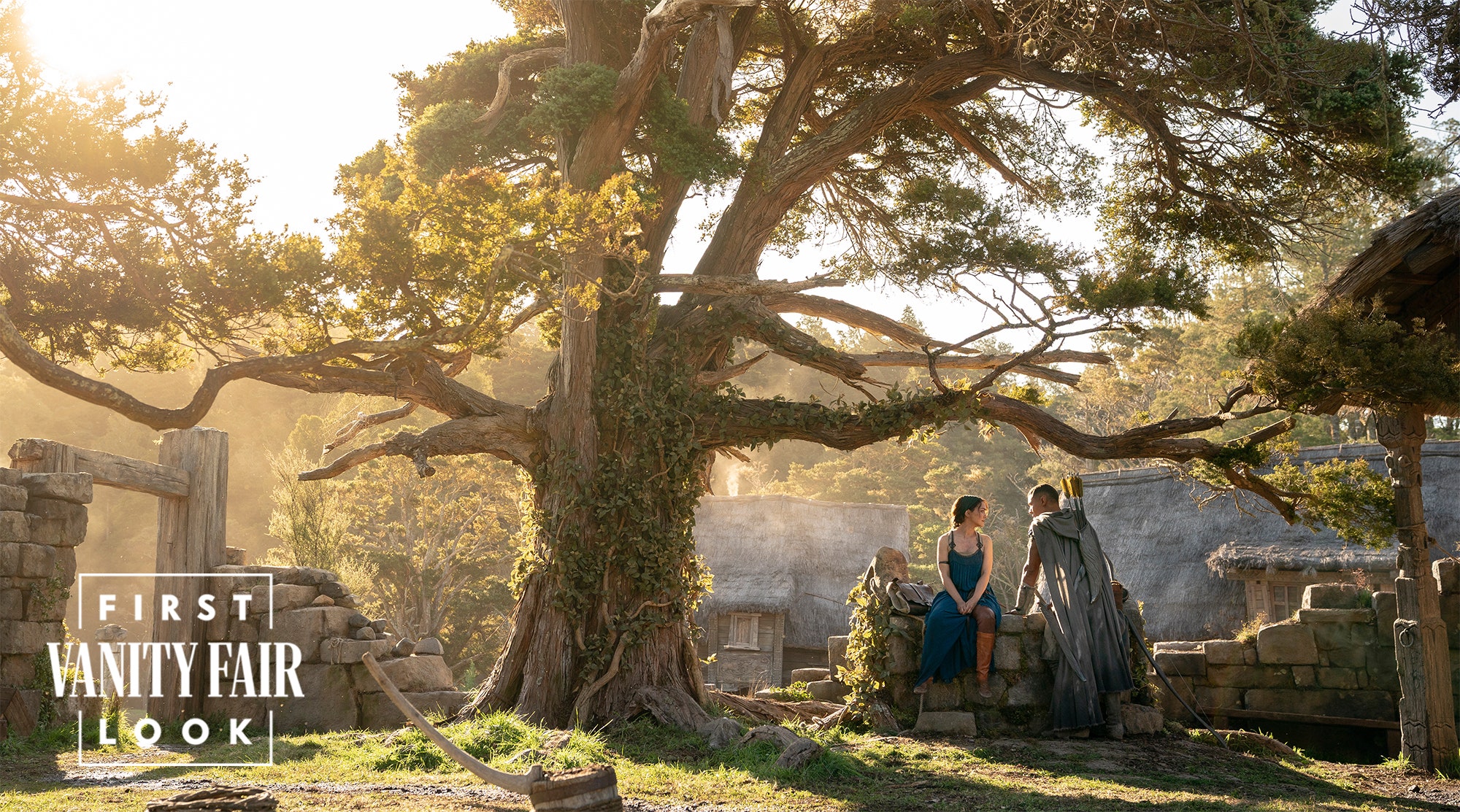
Bronwyn (played by Nazanin Boniadi) with her forbidden love, Arondir (Ismael Cruz Córdova), in the village of Tirharad.
Just as Tolkien entrusted his quest to Frodo Baggins and Samwise Gamgee, Amazon chose two unlikely newcomers. McKay and Payne are high school friends from northern Virginia who have been writing in Hollywood together for 13 years. The Rings of Power is their first credited IMDB listing. They know—it’s astounding to them too. “We’ve worked on so many projects with so many awesome and exciting people that never got made or worked on things that did get made and we didn’t get credit,” says McKay. “We were a little bit of a dark horse. And Amazon talked to absolutely everybody—whoever had any idea for Lord of the Rings.” Adds Payne: “We were passionate about the material and had a take that matched Amazon’s appetites and ambition.” They also apparently had a significant champion in J.J. Abrams, who knew them from their writing on a Star Trek movie and reportedly sang their praises.
Pitching 50 hours of television to Amazon executives—and ultimately to the Tolkien family as well—was arduous but nothing compared to writing, producing, and bringing the show to life. “We felt like hobbits,” Payne says. “We felt like two very small people in a very big world who had just been entrusted with something that meant so much to so many different people.” The showrunners found themselves quoting Frodo’s famous line from the end of The Fellowship of the Ring. “Patrick and I will often look at each other in challenging moments of the show and say, ‘I’m glad you’re with me, Sam.’ ”
“He’s Sam,” McKay adds. “Just kidding, I’m Sam.”

Elrond and Galadriel are reunited in the majestic elven kingdom of Lindon.
A project of this size would never be pulled off alone. Amazon executives, still relatively new to original content, assembled an experienced support team. Game of Thrones co–executive producer Bryan Cogman stepped in as an adviser to help McKay and Payne get the project off the ground, and veteran filmmaker J.A. Bayona (Jurassic World: Fallen Kingdom) established the tone of the series by directing the first two episodes.
Bayona was attracted not just by the duo’s script but by their willingness to accept advice. “From the very beginning, I trusted these guys,” Bayona says. “I knew what they were going through and they knew what I was going through also, because can you imagine going back to such a beloved world and [facing] the high bar of the Peter Jackson movies? We were, all the time, very aware of the massive expectations.”
A fellowship was formed.
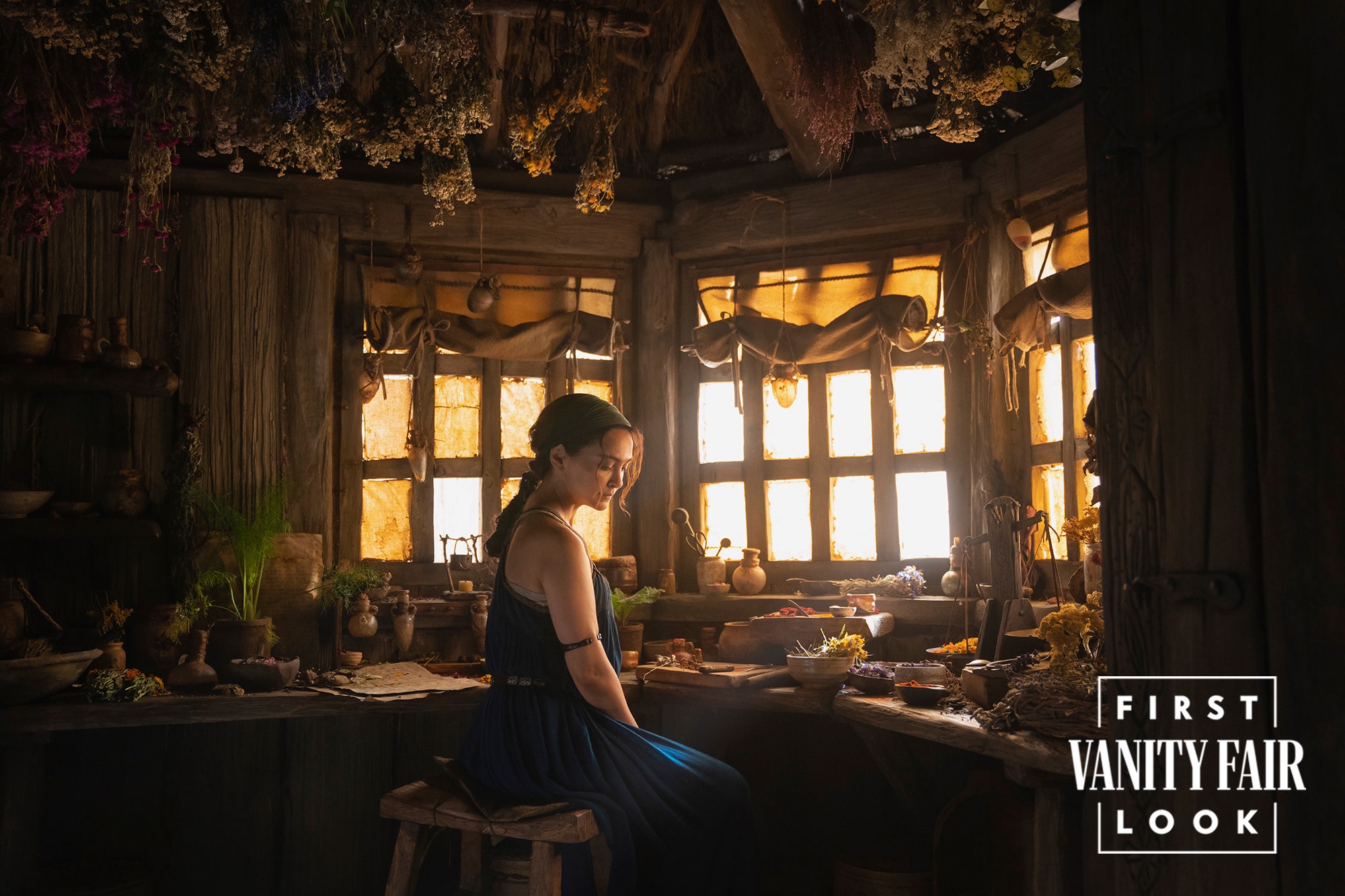
Nazanin Boniadi’s Bronwyn is a single mother and healer, seen here in her apothecary in Middle-earth’s Southlands.
Until now, Amazon has said virtually nothing about its show. The secrecy has irked some in the fandom, accustomed, as they were, to the close relationship and steady flow of behind-the-scenes information from Jackson and New Line Studios. Can a 66-year-old text really be spoiled? Given that many are unfamiliar with the Appendices, the answer is actually yes. “We believe all of that work and all of that security and all of that protection will actually be to the benefit of our customers,” says Vernon Sanders, head of U.S./global television for Amazon. For her part, Salke thinks the secrecy and the intense fan curiosity it generates is healthy for the show. “Anybody who’s scrutinizing, or chasing fliers, or trying to peek in any crack they can to get details, or even speculating—that’s all about fan engagement and passion. So we view it as such,” she says. “The speculation is welcome.” Radio silence has been the norm with Marvel, DC, Star Wars, and latter-season Game of Thrones, but Amazon’s clandestine tactics reached new levels. Even the cast members were hired without being told which parts they would play.
There was one leak in 2019 that, however innocuous, worried some of those watching from afar. The show’s resident Tolkien scholar—a widely respected academic named Tom Shippey—gave an apparently unsanctioned interview to a German fan site that July, opining on what the show could and could not explore. Not long after that, Shippey was no longer involved with the series. Both he and the showrunners decline to say what exactly happened, but the obvious assumption was made by fans. “It seems like the NDA is basically ‘If you tell anyone, we can put you through a wood chipper,’ ” says Drout, the Tolkien professor. Amazon no longer shares the names of its scholars.
The Rings of Power has lost a few other players along the way, including actors Will Poulter and Tom Budge. Coupled with the departures of Shippey, production designer Rick Heinrichs, and one of the executives who helped negotiate the Tolkien deal in the first place, Amazon head of genre Susan Tal Yguado, those losses sparked concern that the production was chaotic early on. But fans of the movies will remember that Stuart Townsend was replaced by Viggo Mortensen even after he began swinging a sword in New Zealand. On any long trip, the executives and showrunners insist, it is inevitable that some don’t complete the journey.
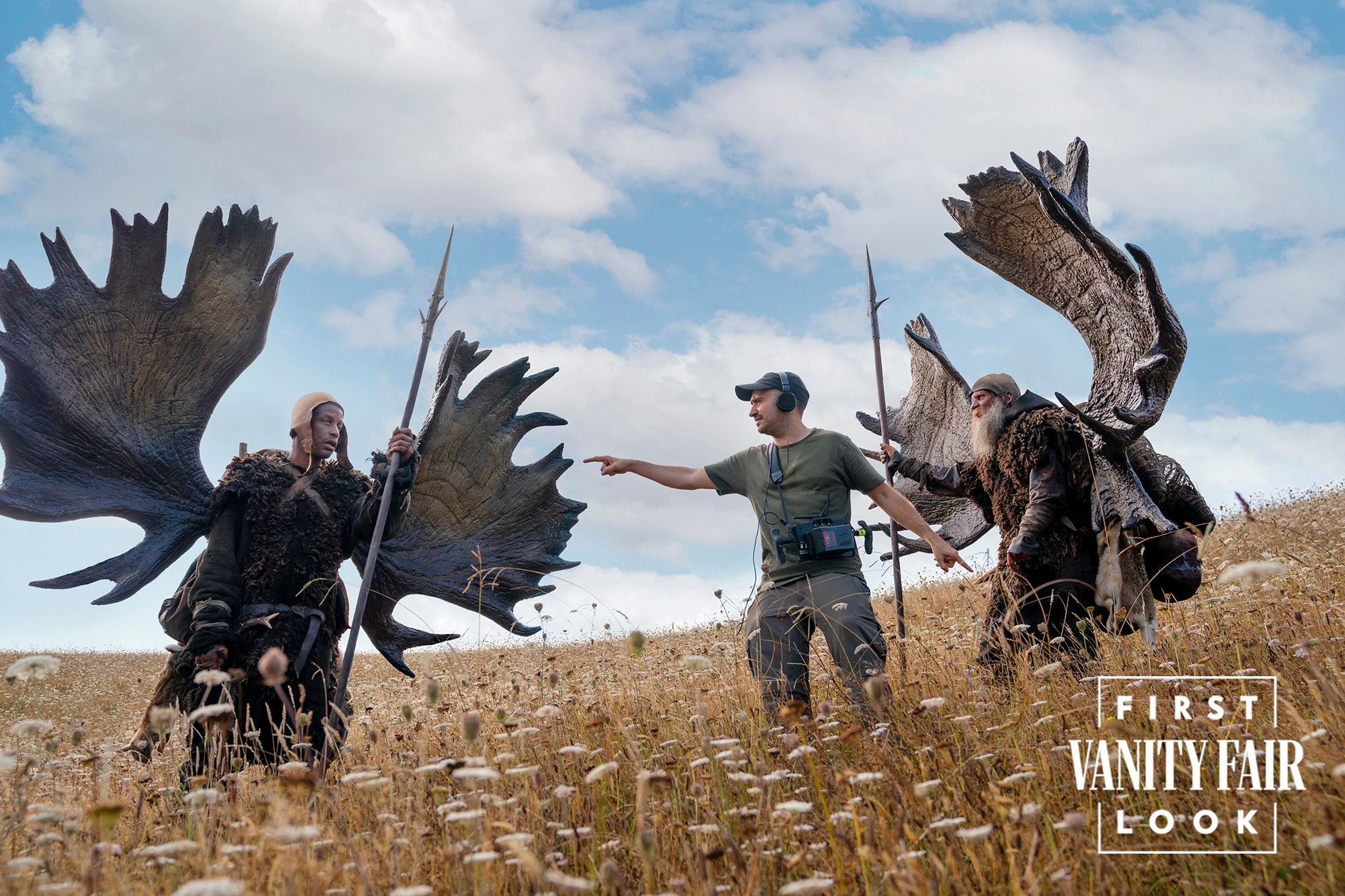
Director J.A. Bayona points the way for two nomadic hunters wandering the fields of Middle-earth.
As lifelong genre fans, Payne and McKay understand the anxiety some feel about the show. “We know what it’s like to be anticipating something and to be terrified that it won’t be what you hope,” says McKay. “We’ve been those guys many times over.” The duo can officially settle some concerns.
After news broke that Amazon had hired an intimacy coordinator for its New Zealand set, some fans feared that the production might have lost sight of what makes Tolkien Tolkien. “My worry would be if it becomes a Game of Thrones in the Second Age,” says Dimitra Fimi, a Tolkien scholar and lecturer at the University of Glasgow. “That wouldn’t be what one would associate with Tolkien’s vision. It would also be derivative.”
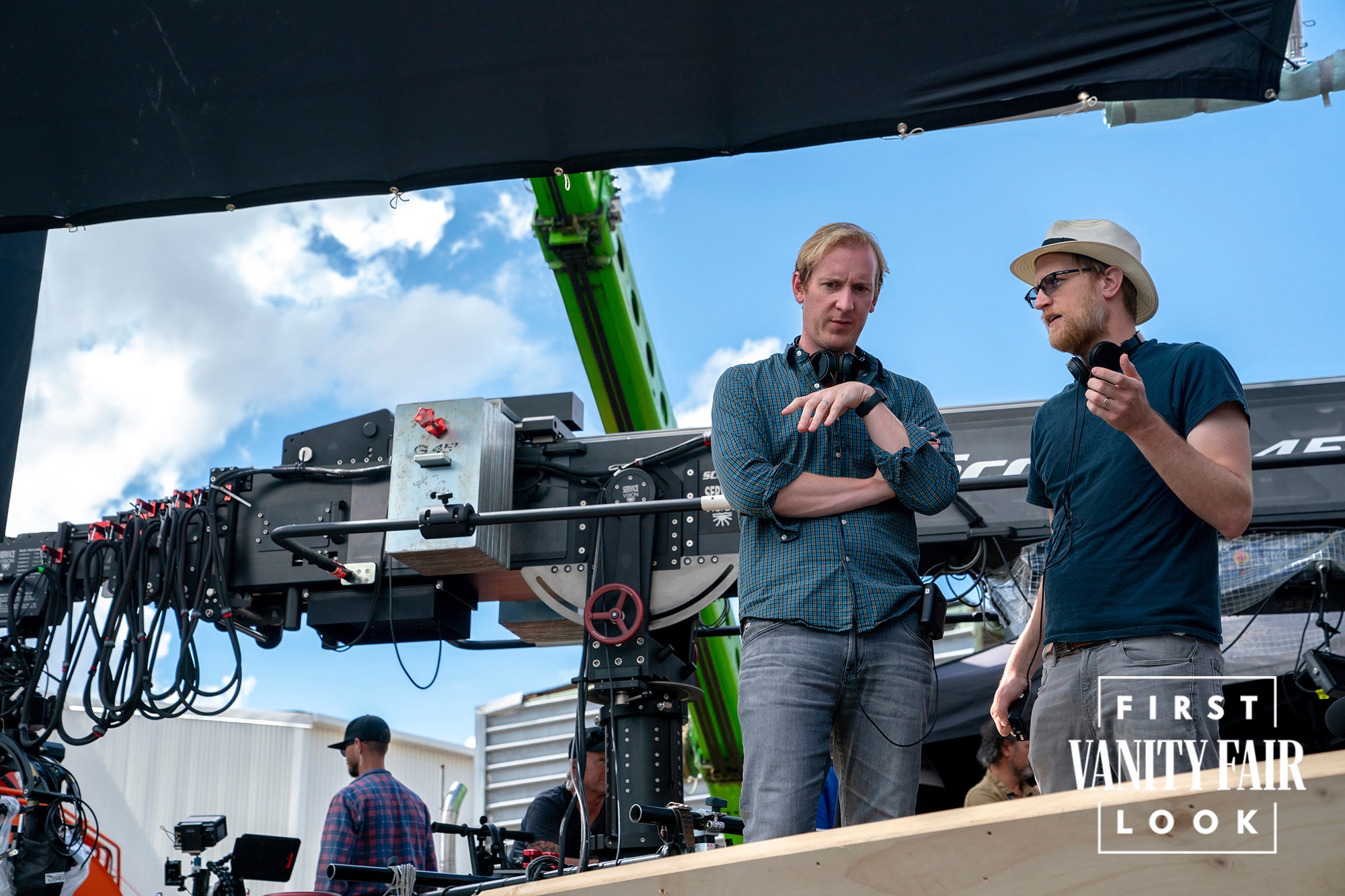
Showrunners Patrick McKay (left) and J.D. Payne (right) on the New Zealand set of The Rings of Power.
So will there be Westerosi levels of violence and sex in Amazon’s Middle-earth? In short, no. McKay says the goal was “to make a show for everyone, for kids who are 11, 12, and 13, even though sometimes they might have to pull the blanket up over their eyes if it’s a little too scary. We talked about the tone in Tolkien’s books. This is material that is sometimes scary—and sometimes very intense, sometimes quite political, sometimes quite sophisticated—but it’s also heartwarming and life-affirming and optimistic. It’s about friendship and it’s about brotherhood and underdogs overcoming great darkness.”
Another concern: Is the series going to put hobbits in the Second Age? In short (so to speak), yes and no. “One of the very specific things the texts say is that hobbits never did anything historic or noteworthy before the Third Age,” says McKay. “But really, does it feel like Middle-earth if you don’t have hobbits or something like hobbits in it?” The hobbit ancestors in this era are called harfoots. They may not live in The Shire, but they are satisfyingly hobbit-adjacent. McKay and Payne have constructed a pastoral harfoot society that thrives on secrecy and evading detection so that they can play out a kind of Rosencrantz and Guildenstern Are Dead story in the margins of the bigger quests. Two lovable, curious harfoots, played by Megan Richards and Markella Kavenagh, encounter a mysterious lost man whose origin promises to be one of the show’s most enticing enigmas.
Amazon’s series will also broaden the notion of who shares the world of Middle-earth. One original story line centers on a silvan elf named Arondir, played by Ismael Cruz Córdova, who will be the first person of color to play an elf onscreen in a Tolkien project. He is involved in a forbidden relationship with Bronwyn, a human village healer played by Nazanin Boniadi, a British actor of Iranian heritage. Elsewhere, a Brit of Jamaican descent, Sir Lenny Henry, plays a harfoot elder, and Sophia Nomvete has a scene-stealing role as a dwarven princess named Disa—the latter being the first Black woman to play a dwarf in a Lord of the Rings movie, as well as the first female dwarf. “It felt only natural to us that an adaptation of Tolkien’s work would reflect what the world actually looks like,” says Lindsey Weber, executive producer of the series. “Tolkien is for everyone. His stories are about his fictional races doing their best work when they leave the isolation of their own cultures and come together.”
When Amazon released photos of its multicultural cast, even without character names or plot details, the studio endured a reflexive attack from trolls—the anonymous online kind. “Obviously there was going to be push and backlash,” says Tolkien scholar Mariana Rios Maldonado, “but the question is from whom? Who are these people that feel so threatened or disgusted by the idea that an elf is Black or Latino or Asian?”
Even hard-core fans who regard Tolkien’s work as sacrosanct will recognize his message of unity. Staying true to that is as important as realizing his vision of places and characters from this little known era in his fiction. We will finally see the full glory of Khazad-dûm—the cavernous necropolis carved into the Misty Mountains, where, in Jackson’s The Fellowship of the Ring, Gandalf famously bellowed at the Balrog, “You shall not pass!” The show will explore that kingdom when it was still full of light, food, and music. It will also bring the elven smith Celebrimbor (Charles Edwards) to life, as his skill with metals and magic lead to the forging of the rings. And a canny young elven architect and politician named Elrond (Robert Aramayo) will rise to prominence in the mystical capital of Lindon. Another story line will follow a sailor named Isildur (Maxim Baldry) years before he becomes a warrior and cuts the soul-corrupting ring off Sauron’s hand, then falls victim to its powers himself.
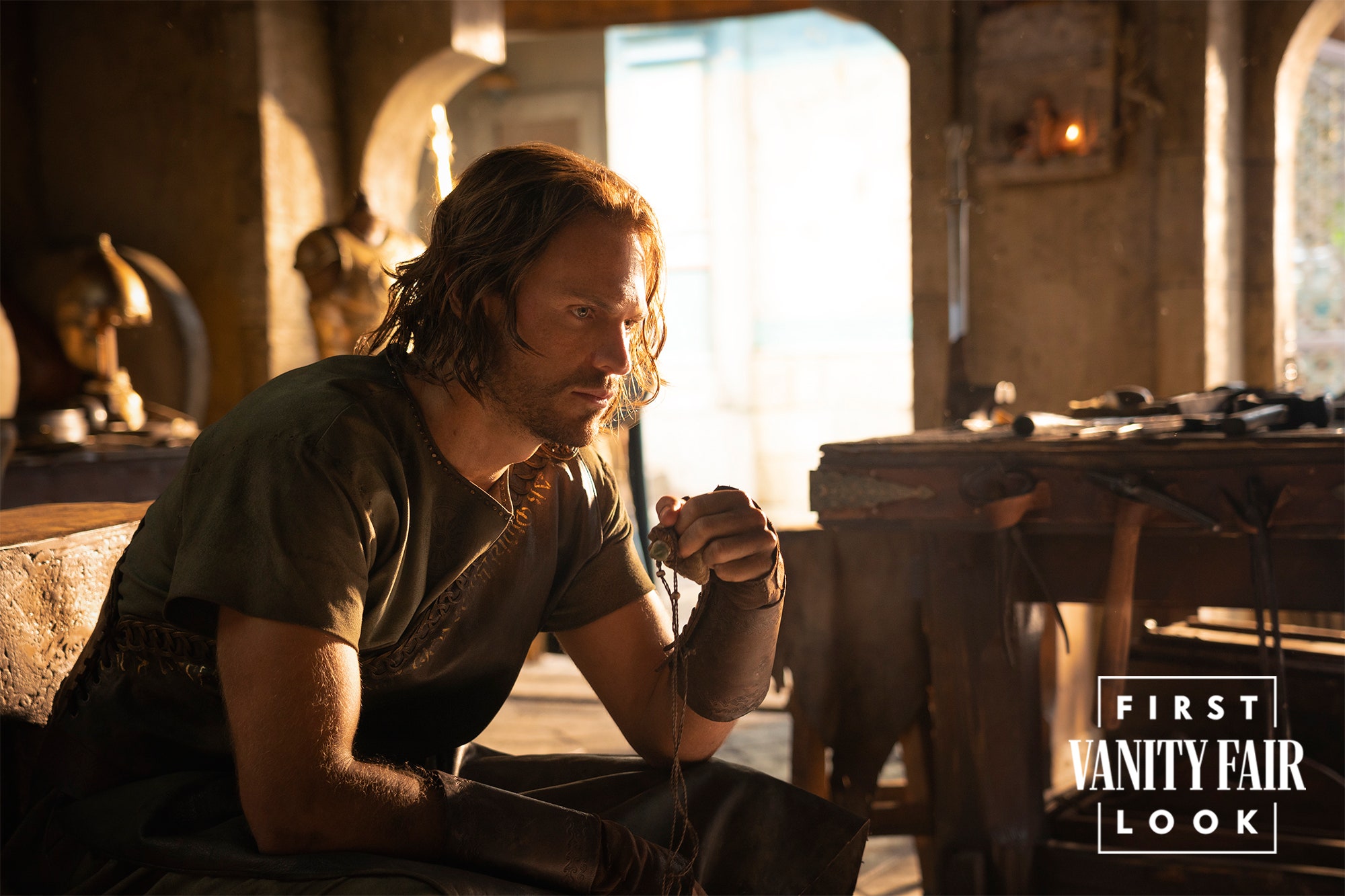
Charlie Vickers as Halbrand, a new character who is a fugitive from his own past.
Speaking of Sauron, the villain’s presence is a major factor throughout the Second Age, culminating in his resurrection as a tyrant. As the show begins, there are only hints of the danger to come. Some see them clearly; others don’t necessarily want to. Bayona drew from his memories growing up in Spain, a country still recovering from a civil war decades before he was born. “We had a dictatorship for 40 years, so you notice the repercussions of war and the shadow of the past,” he says, noting that “Shadow of the Past” is in fact the title of the first episode. “I think this is all about the repercussions of war. There is an idea that feels very faithful to Tolkien, which is intuition. Galadriel has an intuition that things are not fixed, and there is still something lurking.”
In the novels, the aforementioned things take place over thousands of years, but Payne and McKay have compressed events into a single point in time. It is their biggest deviation from the text, and they know it’s a big swing. “We talked with the Tolkien estate,” says Payne. “If you are true to the exact letter of the law, you are going to be telling a story in which your human characters are dying off every season because you’re jumping 200 years in time, and then you’re not meeting really big, important canon characters until season four. Look, there might be some fans who want us to do a documentary of Middle-earth, but we’re going to tell one story that unites all these things.”
The showrunners clearly have great respect for Tolkien, but you can’t make a 50-hour adaptation without taking creative risks. “We think the work will eventually speak for itself,” Payne says when asked if fan concern and speculation ever unnerves him. “Before an orchestra starts, audiences will talk to each other, but then as soon as the music begins, you’re in and you’re listening to that music.”
https://www.vanityfair.com/hollywood/2022/02/amazon-the-rings-of-power-series-first-look/amp




